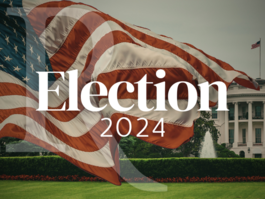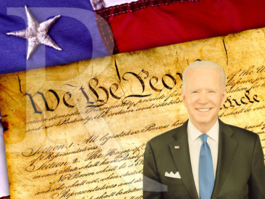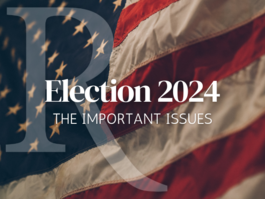Partisan Gender Gap Not Just About Women
A Commentary By Alfred J. Tuchfarber
It's interesting to hear politicians, political analysts and journalists use the term "gender gap." They do so with great frequency, and it is almost always explicitly, implicitly or contextually focused on women. It is true, of course, that women usually vote 8% to 12% more Democratic than do men.
But, that misses three key points:
1. There are, by definition, two sides to this phenomenon: women and men. If they behaved the same, there would be no gender gap. The use of the concept gender gap is almost always to suggest Republican weakness with women voters, but because there are two and only two sides to this coin, logic tells us the Democrats must have an equally large problem with men. That is a simple truism and proven in election after election.
2. It will surprise many to learn when and how the gender gap emerged. From the time women were able to vote in federal elections (1920) until and through the 1976 Carter-Ford election, men and women voted essentially in equal percentages for Republicans and Democrats. But, in the 1980 Reagan-Carter election what we now call the gender gap emerged and has persisted ever since.
Although there were both Democratic and Republican presidents elected during the 1952 to 1976 period, the Democrats had large advantages in partisanship among the electorate. Ronald Reagan caused many men and fewer women to become Republican partisans. Some Reagan Democrats and independents later went back to their previous partisanship, but especially among men, large numbers stayed Republican.
Thus the gender gap was formed. Not by the movement of women away from "that evil Reagan," but by movement of men toward "that appealing Reagan." Most women stayed firmly with the Democrats and many men joined and stayed with the Republicans.
3. What explains this gap? Polling indicates that men and women have different policy preferences when it comes to the size of government. Probably the biggest true and persistent difference between Democratic policy and Republican policy is that Democrats heavily support "big government" and government help for individuals and Republicans support "small government" and more reliance on self and family. And women generally are more supportive than men of government programs. For instance, the Pew Research Center recently reported that:
"For more than a decade, women have been more likely than men to favor an active role for government... In the October 2011 survey, nearly half of the public (48%) favored a smaller government that provides fewer services, while 41% preferred a bigger government with more services. While 45% of women preferred a bigger government with more services, fewer men agreed (36%). That was in line with the gender differences on this issue dating back to at least 2000."
Men's and women's different policy preferences help explain why women are more supportive of Democrats while men are more supportive of Republicans.
The empirical reality is that BOTH parties have a troublesome gender gap: Republicans with women and Democrats with men. That's not always clear from the way the concept is presented.
Sophisticated analysts will point out that more women than men vote in the average election. That is true, but the arithmetic tells us that the advantage the Democrats get from more women voting is less than one-half of one percent. That is about the same size advantage Republicans have from states with six or fewer electoral votes having disproportionate electoral clout because of the electoral vote system we use to elect our presidents: Recall that in the 2000 Bush-Gore election, Gore beat Bush by one-half percent in the popular vote but lost in the Electoral College vote.
So, the next time you hear gender gap, listen carefully to see if the users of the concept really know what they are talking about.
Dr. Alfred J. Tuchfarber, Professor Emeritus of Political Science at the University of Cincinnati, is the founder of UC's OHIO POLL.
Larry J. Sabato is the director of the Center for Politics at the University of Virginia.
See Other Commentary by Larry Sabato
Rasmussen Reports is a media company specializing in the collection, publication and distribution of public opinion information.
We conduct public opinion polls on a variety of topics to inform our audience on events in the news and other topics of interest. To ensure editorial control and independence, we pay for the polls ourselves and generate revenue through the sale of subscriptions, sponsorships, and advertising. Nightly polling on politics, business and lifestyle topics provides the content to update the Rasmussen Reports web site many times each day. If it's in the news, it's in our polls. Additionally, the data drives a daily update newsletter and various media outlets across the country.
Some information, including the Rasmussen Reports daily Presidential Tracking Poll and commentaries are available for free to the general public. Subscriptions are available for $4.95 a month or 34.95 a year that provide subscribers with exclusive access to more than 20 stories per week on upcoming elections, consumer confidence, and issues that affect us all. For those who are really into the numbers, Platinum Members can review demographic crosstabs and a full history of our data.
To learn more about our methodology, click here.



